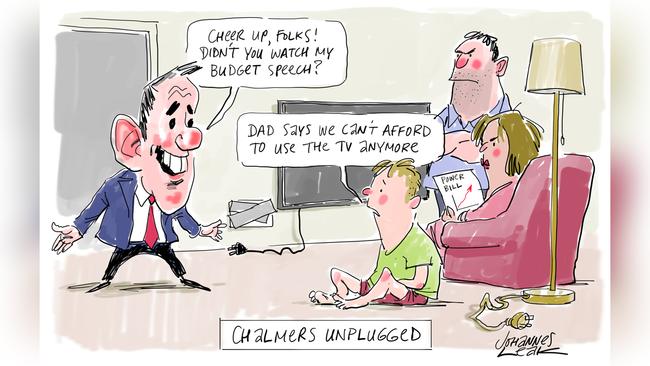
As well, it will fuel fears that inflation may be here to stay, higher and for longer, and the Reserve Bank will have no choice but to respond with “brutal” interest rate rises that could push the economy into a slow-growth funk with job losses in prospect.
The RBA board meets on Melbourne Cup day.
The Treasurer calls elevated inflation “public enemy No.1”, as it threatens to punch further holes in his deficit-laden budget because indexation of pensions and JobSeeker will push up the cost of social welfare.
In a grim scenario in the budget papers, Treasury shows that higher inflation, peaking at 8.75 per cent this year, and higher interest rates would lower family incomes, cut into household savings, batter consumer demand, trim economic growth and lead to a sharp bump up in the jobless rate.
Treasury estimates the unemployment rate, now at 3.5 per cent, could be 5.25 per cent by the middle of 2024, just as the Albanese government gears up for its re-election campaign.
If the world economy slides into recession, including our major trading partners, the double blow from a local and global slowdown would see the economy in miserable shape.
“Inflation is the dragon we need to slay,” Chalmers told the National Press Club on Wednesday in the traditional post-budget address.
The home truth is that after a hold-the-line fiscal effort, there’s very little the Albanese government can do but watch and wait, hope and pray the storm passes, and the RBA batters the beast into submission.
But we won’t know for some time if the central bank’s “whatever it takes” policy approach snuffs out rising community expectations of persistent inflation and keeps a lid on wages claims.
All the risks for a “hard landing” get ratcheted up.
The increase in the price of goods, many of which are difficult to access because of supply snarls overseas, continues to outpace inflation for local services.
More worrying, the cost of the basket of family essentials such as food, fuel, power and rents, is rising at an annual rate of 8.4 per cent, while the price of luxuries is growing by 5.5 per cent.
This is a kitchen-table crisis in middle Australia, albeit one driven by extraordinary factors, including natural disasters and the war in Ukraine.
Still, underlying or core inflation, which the RBA focuses on, rose from an annual 4.9 per cent in June to 6.1 per cent in the September quarter.
Economists now expect the central bank’s cash rate target will be higher.
CBA, the nation’s biggest home lender, raised its call for the RBA’s “terminal rate” to 3.1 per cent, in two more moves, up from the current 2.6 per cent.
More pain is loaded in the pipeline, especially for electricity and gas users, while a housing crunch looms as mortgages become more expensive and home values fall.
Albanese’s and Labor’s list of enemies is growing.




Wednesday’s inflation surprise has cast a shadow over Jim Chalmers’ first budget, and will amp up calls for further cost of living relief and pay rises in Labor’s heartland.